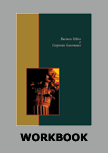Trouble in the 'Magic Kingdom': Governance Problems at Disney




|
|
ICMR HOME | Case Studies Collection
Case Details:
Case Code : BECG038
Case Length : 12 Pages
Period : 1995 - 2004
Pub. Date : 2004
Teaching Note : Available
Organization : Walt Disney Co.
Industry : Media & Entertainment
Countries : USA
To download Trouble in the 'Magic Kingdom': Governance Problems at Disney case study (Case Code:
BECG038) click on the button below, and select the case from the list of available cases:

Price:
For delivery in electronic format: Rs. 300;
For delivery through courier (within India): Rs. 300 + Rs. 25 for Shipping & Handling Charges
»
Business Ethics Case Studies
» Case Studies Collection
» ICMR Home
» Short Case Studies
» View Detailed Pricing Info
» How To Order This Case
» Business Case Studies
» Case Studies by Area
» Case Studies by Industry
» Case Studies by Company

Please note:
This case study was compiled from published sources, and is intended to be used as a basis for class discussion. It is not intended to illustrate either effective or ineffective handling of a management situation. Nor is it a primary information source.
|
|
<< Previous
Excerpts
New Governance Norms
According to analysts, by the early 2000s, the Disney board had acquired the dubious distinction of being one of the worst boards in the US. Analysts believed that the board was not powerful enough to oppose Eisner on any matter and that it allowed him to bulldoze all the decisions.
|
In January 2002, the board appointed Ira Millstein (Millstein), a leading corporate governance lawyer to suggest changes that would improve the governance of the company. Some of Millstein's recommendations included: The expansion of the company's corporate governance committee, the shrinking of the board from 16 to 12 directors and not using the company's auditor for non-auditing consulting work. By the end of 2002, the company had formally adopted the new governance norms which were based on Millstein's recommendations. By early 2003, the company had stopped using its auditor PricewaterhouseCoopers, for non-auditing consulting work. Disney adopted a policy that two-thirds of the directors be independent, and that all of them hold at least $100,000 in company stock...
|
|
Instances of Bad Goverance
Although it was generally acknowledged that Eisner was responsible for making Disney (which was until then known for its children's films and theme parks) into a well recognized and successful global media conglomerate, it was felt that he was assuming too much power in the organization.
|
|
In the first thirteen years under Eisner, the market value of Disney rose from $2 billion to $67 billion. However, by the late-1990s, analysts began noticing that the company was hinging too much on Eisner. In 1999 and 2000, Disney featured in BusinessWeek's annual survey of corporate boards, among the worst boards in the US. Ever since Eisner took over as chairman and CEO, analysts felt that he exercised an undesirable level of control over the board at Disney. It was alleged that he resorted to nepotism in appointing board members, and tried to make most of the appointments from among his personal friends and acquaintances. This seemed to have increased his clout in the company and the board became a rubber stamp to his decisions... |
Excerpts Contd... >>
|
|





